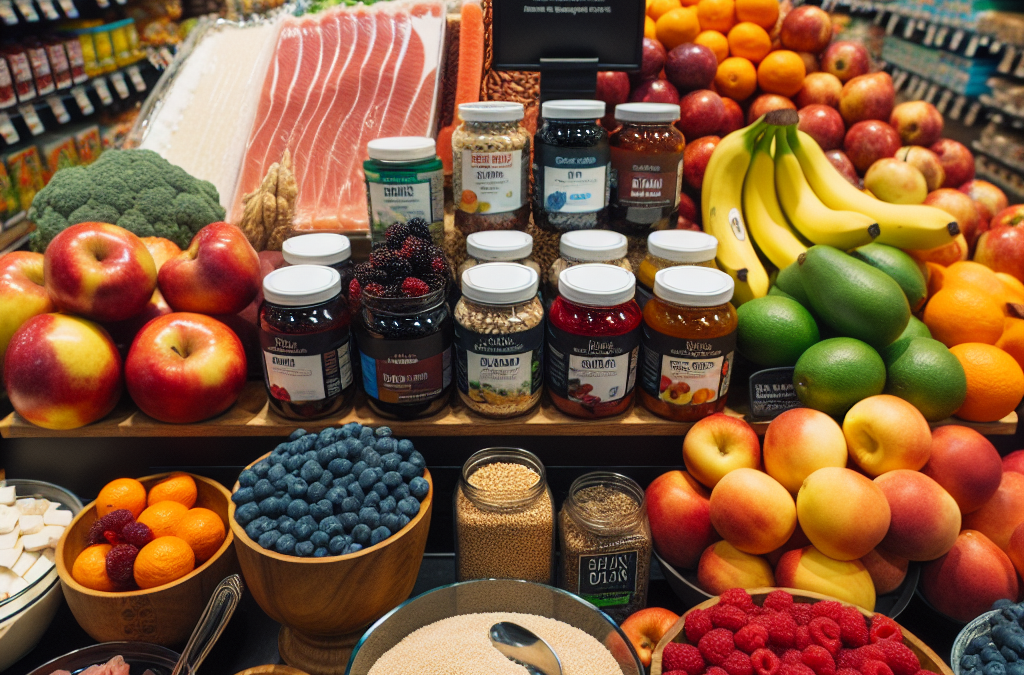Understanding the Role of Whole Foods
What Are Whole Foods?
Whole foods are foods that are minimally processed and free from artificial ingredients. They include a range of fruits, vegetables, whole grains, nuts, and seeds. Personally, I’ve found that incorporating these foods into my diet has made a significant difference in how I feel, especially regarding my energy levels and overall health.
When it comes to managing blood sugar levels, whole foods provide essential nutrients without the added sugars and unhealthy fats that processed foods often contain. I’ve been on this journey, and I can tell you that embracing whole foods feels like diving into a treasure chest of health benefits.
Not only do they nourish your body, but whole foods also contribute to stable blood sugar levels. By focusing on these nutrient-dense options, you set yourself up for greater health and well-being. It’s a constant learning process, but so rewarding!
Top Whole Foods to Include in Your Diet
Fruits and Vegetables
Fruits and vegetables are at the heart of a balanced diet. They’re packed with fiber, vitamins, and minerals that help regulate blood sugar. My go-to options are leafy greens, berries, and avocados, which I can easily toss into smoothies or salads.
When shopping, I always aim for variety; colorful fruits and veggies not only look appealing but also provide a spectrum of nutrients. Did you know that the fiber in these foods helps slow down digestion? It’s a game-changer for blood sugar control!
Also, it’s best to choose whole fruits over juices. This way, I benefit from all the fiber, preventing spikes in my blood sugar while enjoying all the natural sweetness.
Whole Grains
Whole grains are another essential component. They include foods like quinoa, brown rice, and whole wheat bread. I’ve made a conscious effort to swap out refined grains for their whole counterparts, and honestly, my meals feel way more satisfying now.
The fiber content in whole grains not only aids digestion but also helps maintain blood sugar levels. I often make a big batch of quinoa at the beginning of the week; it’s super versatile and can be used in salads, bowls, or even as a side dish.
Plus, they pack a punch in terms of nutrients. Instead of feeling sluggish after meals, I now enjoy sustained energy throughout the day, which is not only beneficial for my mood but also my productivity!
Healthy Fats
Healthy fats, such as those found in nuts, seeds, and olive oil, are vital for overall health and blood sugar management. I’ve discovered that incorporating these fats into my meals can lead to better satiety, meaning I feel full for longer and avoid unnecessary snacking.
Olive oil, in particular, has become a staple in my kitchen. I use it for everything, from drizzling over salads to cooking vegetables. It’s heart-healthy and adds an amazing flavor to dishes.
Don’t overlook nuts and seeds either; they’re not just tasty but provide protein and fiber that can positively impact blood sugar levels. I keep a small container of almonds or sunflower seeds with me for those busy days when I need a quick snack that won’t send my sugar levels flying!
Mindful Eating Practices
Listening to Your Body
One of the most important lessons I’ve learned is to listen to my body’s signals. This means eating when I’m hungry and stopping when I’m satisfied. It’s easy to get caught up in portion sizes and calorie counting, but I’ve found that tuning into my body makes me feel more connected to my food and its effects.
Before reaching for a snack, I ask myself if I’m genuinely hungry or just bored. This practice has saved me from mindless munching and helped keep my blood sugar levels in check.
Get an Amazing Discount on the Best Certified Organic Whole Food Supplement!
Taking the time to enjoy my meals mindfully has made a huge difference in how I feel afterward. It’s all about quality over quantity, and slowing down has been a delightful experience.
Planning Your Meals
Meal planning initially sounded complicated to me, but it has become a fun activity that I look forward to each week. I jot down ideas for meals, create a grocery list, and prep what I can ahead of time. This way, I’m ready with healthy options when life gets busy.
Having whole foods prepared in advance makes it so much easier to keep my blood sugar levels steady. I’m less tempted to grab processed snacks because I know I have delicious, wholesome meals at the ready!
If I can throw together a quick stir-fry or salad within minutes, I’m way less likely to choose fast food. This habit feels like a small victory every time it happens.
Staying Hydrated
Hydration is often overlooked but plays a critical role in blood sugar management. I’ve noticed that when I’m properly hydrated, I feel more energized and less likely to crave sugary foods. It’s all connected!
Water is my main drink of choice, but I also enjoy herbal teas. They’re a great way to switch things up without adding sugar or calories. Plus, keeping a reusable water bottle nearby reminds me to drink throughout the day.
Sometimes, a lack of hydration can be mistaken for hunger, so staying on top of my water intake has become a priority. I make sure to sip on water regularly, which makes a world of difference in how balanced my blood sugar feels.
Conclusion: Making Whole Foods Work for You
Integrating whole foods into my diet hasn’t just helped with managing blood sugar; it’s transformed how I feel daily. It’s about making informed choices, embracing variety, and enjoying the eating experience. As you explore these options, find what resonates the most with you and keep it fun!
Remember, it’s about progress, not perfection. Don’t be too hard on yourself, and celebrate those small victories along the way! With patience and dedication to incorporating these whole foods, you’ll notice a positive shift in your health.
FAQ
What are whole foods, and why are they important for diabetes?
Whole foods are minimally processed and include fruits, vegetables, whole grains, nuts, and seeds. They are important for diabetes because they provide the nutrients your body needs without the added sugars or unhealthy fats, helping to stabilize blood sugar levels.
Which fruits and vegetables should I prioritize for blood sugar control?
Focus on colorful options like leafy greens, berries, and avocados. These are rich in fiber and essential nutrients that can help manage blood sugar levels while providing a variety of health benefits.
How can healthy fats help with blood sugar levels?
Healthy fats, such as those from nuts and olive oil, help slow digestion, promote satiety, and can lead to better blood sugar control. Incorporating them into your diet can keep you feeling full longer and curb cravings.
What does mindful eating involve?
Mindful eating means being present during meals—listening to your body’s hunger cues, savoring each bite, and stopping when you’re satisfied. This practice can reduce overeating and help maintain blood sugar levels.
What role does hydration play in managing diabetes?
Staying hydrated is crucial as it plays a role in metabolism and can help prevent cravings. Proper hydration helps maintain energy levels and can prevent confusion between hunger and thirst.




